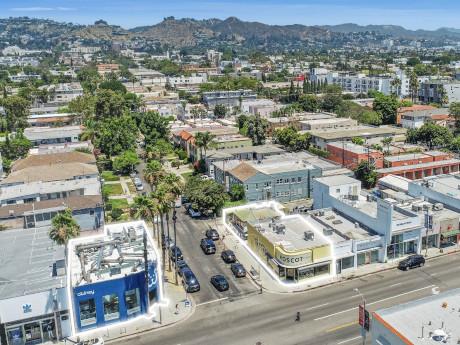— By Gary Baragona, Vice President of Research, Kidder Mathews —
Home to an eclectic mix of local retailers, award-winning restaurants and the world’s most prestigious brands, Los Angeles has long been one of the most dynamic retail markets in the country. However, sector dynamics significantly shifted during the pandemic as retailers began to rely heavily on their online sales to stay in business and remain profitable. While consumer preferences further evolved in 2022 and 2023, there has been a noticeable slowdown in consumer spending, largely due to ongoing economic challenges, reduced buying power, decreased savings and increased credit card debt.
On the surface, overall market fundamentals within the commercial real estate retail sector appear to be relatively stable. Some key indicators illustrate market resiliency, but other trends demonstrate the recent struggles felt by the retail sector and the challenges that may lie ahead. For example, total leasing activity across the Los Angeles region was down 15 percent in 2023 compared to the previous year, and down 25 percent compared to pre-COVID averages.
The total vacancy rate across Los Angeles increased to 5.3 percent during the first quarter of 2024 and has consistently hovered between 5 percent and 5.3 percent since mid-year 2020. The recent increase in vacancy is largely due to subdued and inconsistent demand from retailers since the onset of the pandemic, which is expected to continue during the near-term. For perspective, the three-year, post-COVID average is 5.1 percent compared to the three-year, pre-COVID average of 4.1 percent, as well as the long-term 20-year average of 4.5 percent.
There has also been a persistent and measurable performance gap between Downtown Los Angeles and the suburbs, with the former posting a vacancy rate of 7.2 percent at the end of the first quarter and the latter totaling 5 percent, collectively. Much of this can be attributed to a decrease in Downtown foot traffic and the evolving hybrid work model, which is having a significant impact on most urban cores across the country.
More stores opened their doors than closed them in 2023, but the volume was not enough to positively impact market statistics. Store closures will continue in 2024 and will come from a variety of places, including restaurants, big box retailers, national chains, and local mom and pops. The factors impacting these closures include the uncertain economy, high inflation rates and safety concerns in some neighborhoods. All of these elements continue to have a notable impact on the industry.
Los Angeles’ retail market still has a long way to go before it can once again be considered a strong and expanding market. However, overall fundamentals remain relatively well-positioned for growth once the economy stabilizes and consumer confidence strengthens. Until that shift occurs, though, the retail market will continue to struggle and remain subdued.


